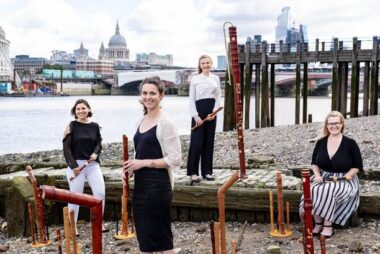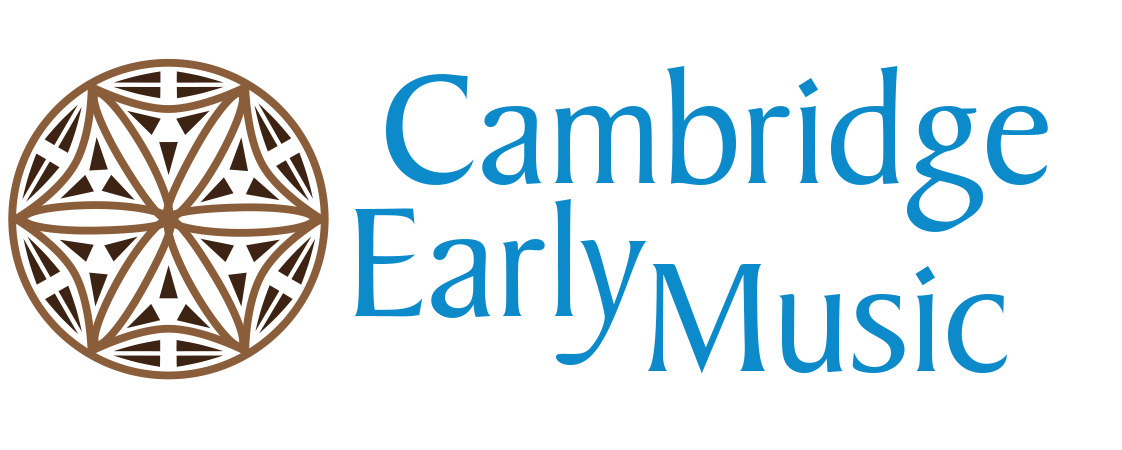
Hear Palisander in Divorced, Beheaded, Died on 21 April
Members of Palisander:
- Caoimhe de Paor
- Tabea Debus
- Lydia Gosnell
- Miriam Monaghan
What were your first musical experiences as a child?
Caoimhe’s parents met in the local Brass and Reed Band. When she and her twin sister were born, they were the first ‘band babies’ and used to sleep at the back of rehearsals when they were just a few months old! Later, they joined the band, playing with their parents and younger sister.
For Tabea, there was a lot of music at home, but she started learning to play her blue plastic recorder “properly” when she was six and joined a kindergarten friend for his lessons.
Lydia’s grandad introduced her to many interests, including travel, art, sport and especially music – they have shared lots of experiences since she was very young and at 95, he still enjoys coming to hear her concerts.
Miriam’s mum was a primary school teacher and so had a few recorders at home for her to play with as a young child. She taught herself to play along with her favourite Disney songs and was hooked from there!
Who has been the biggest musical influence on your life?
Palisander has been fortunate to work with, and alongside, some incredibly inspiring musicians, teachers and friends. It wouldn’t be possible to choose a single person for all four of us, we come from very different backgrounds, each with our own unique pool of influences that have shaped the musicians we are today.
What music do you enjoy listening to outside of work and performance?
Miriam enjoys listening to a huge variety of music, from 70’s punk to 90’s pop. Tabea likes classical and romantic symphonies, or 60s classics. Caoimhe loves listening to chill singer-songwriter vibes, such as The Staves or Laura Marling and has a soft spot for piano music like Einaudi. Depending on her mood, Lydia can be found listening to Frank Sinatra, Taylor Swift, Leonard Cohen or Rogers and Hammerstein musicals!
What has been the most memorable performance you have given?
Palisander has lots of fond memories of concerts. We were thrilled to give a series of concerts in Tokyo, which we introduced ourselves, in Japanese! Another magical performance was on the tiny Scottish Isle of Eigg, including a workshop with the island’s primary school, consisting of five pupils.
How did you come to be involved in this ensemble?
Palisander was founded ten years ago, at the Guildhall School of Music and Drama. We have a shared passion for introducing new audiences to the recorder and its wide range of repertoire, from theatrical concerts, to innovative education projects.
Tell us about the instruments you will be playing
Palisander will be playing a Renaissance consort of matching recorders – copies of instruments from the Venetian Kunsthistorisches Museum, made by American recorder maker, Tom Prescott. We’ll also have our great bass and six-feet-tall contrabass recorder, both made by Kung.
There will be other recorders, all made from different types of wood. We love talking to audiences about the instruments at the end of concerts, so please do come for a closer look at them and to ask us more about them!
What should the audience expect from your concert at CEM?
This concert will showcase Palisander’s signature blend of early music combined with bespoke arrangements and compositions for the ensemble, interweaved with historical readings, storytelling and movement, performed on recorders of all different shapes and sizes!
What is your favourite part of this programme?
This programme is unusual for our ensemble, in that it focusses almost entirely on music dating from quite a small window of time: the first half of the 16th century. This allows us extended opportunity to indulge in our beautiful Renaissance consort of recorders.
One of the things we have always found very special about early music is this idea of bringing history to life, by recreating almost exactly what would have been heard by a Tudor listener. In this programme, there is the added dimension of breathing life into music directly from the pen of legendary historical figures, such as Henry VIII. To imagine we are hearing music composed by him directly, creates quite an intimate portrait of a man otherwise wrapped in legend.
Do you have connections to Cambridge?
We’re thrilled to performing together in Cambridge, for the first time!
Which other concerts at this year’s CEM would you most like to attend and why?
Solomon’s Knot performing Bach’s St Matthew Passion, without conductor or vocal scores sounds really interesting and an exciting new way to present such a renowned masterpiece.
